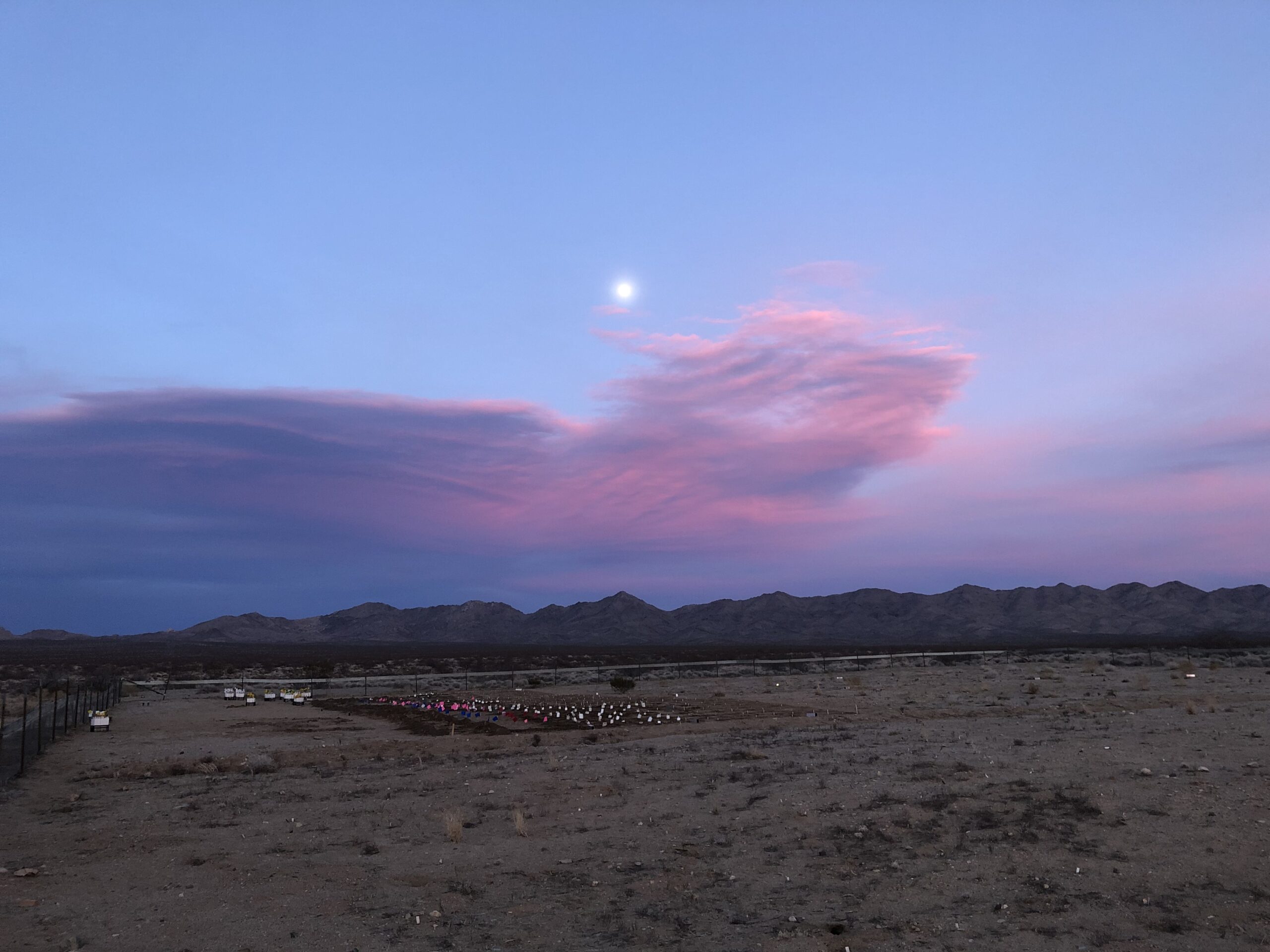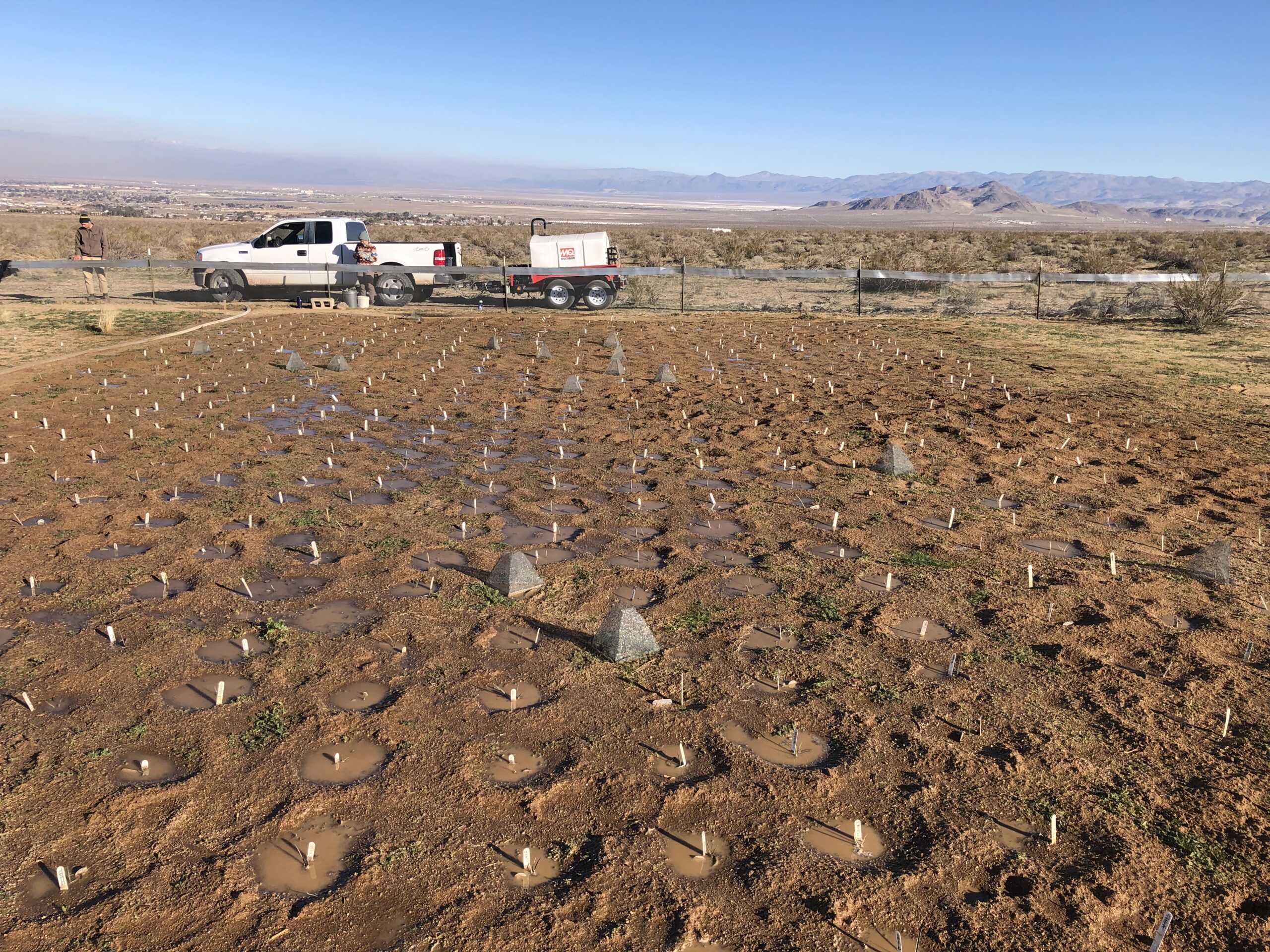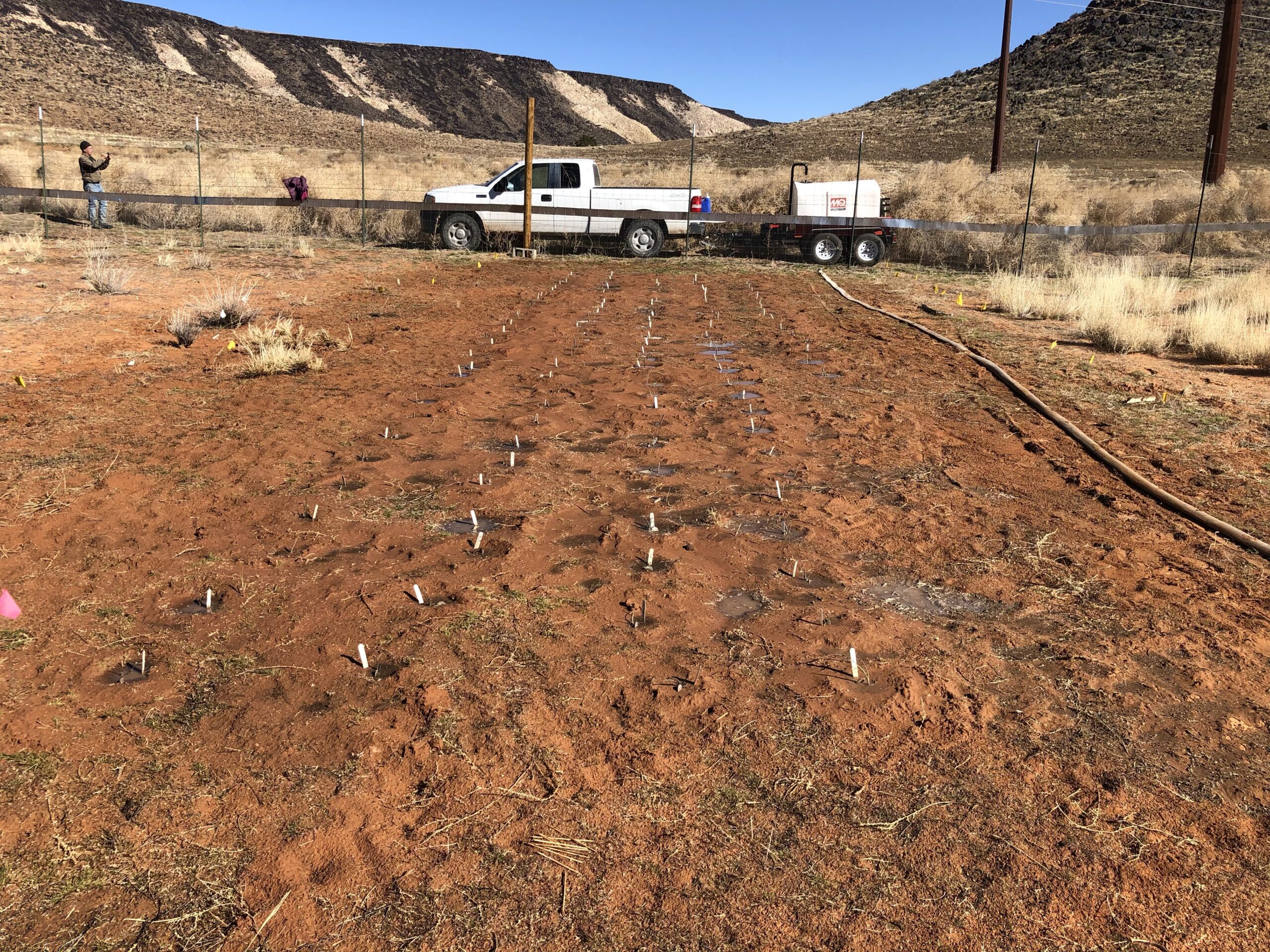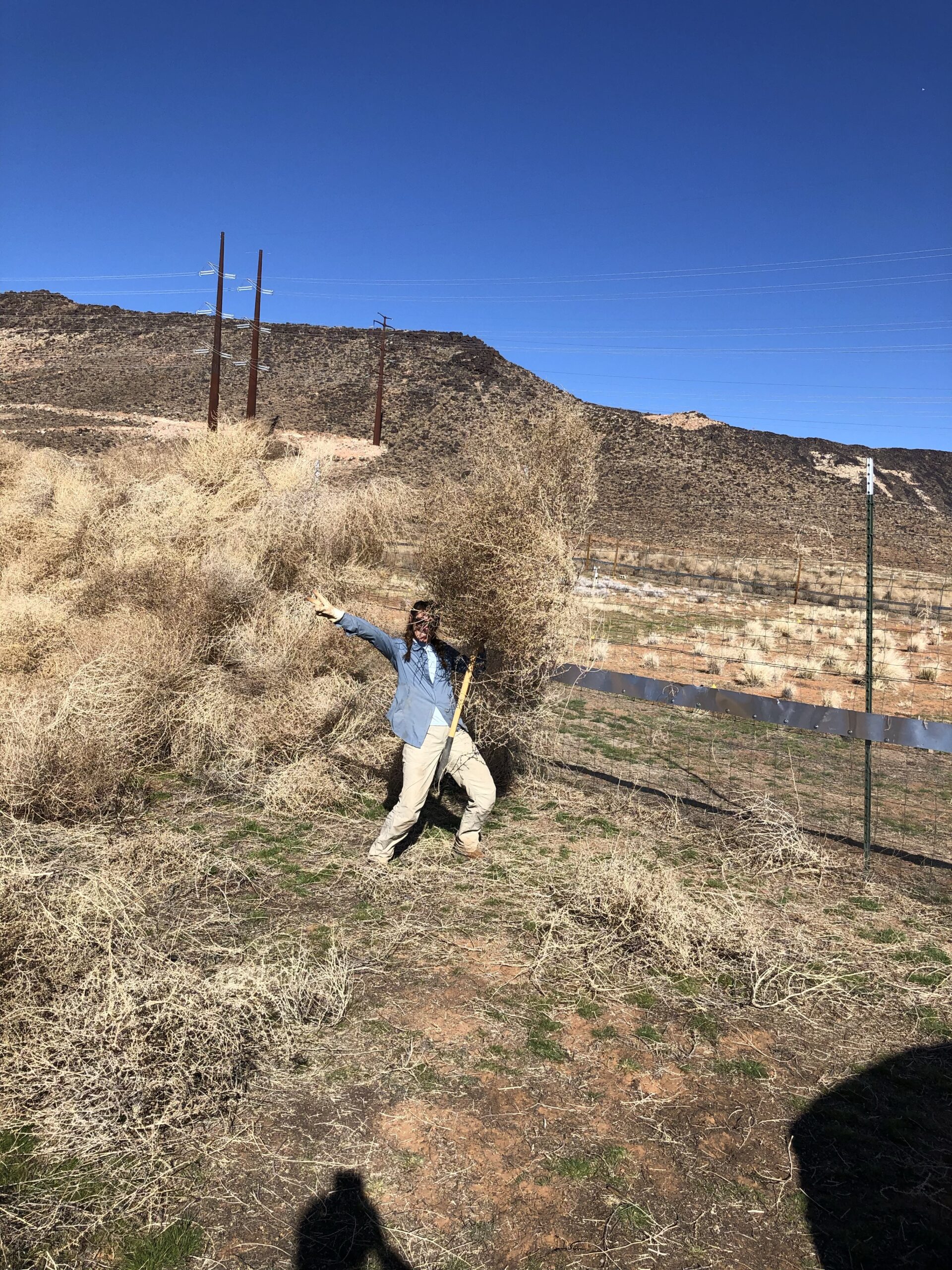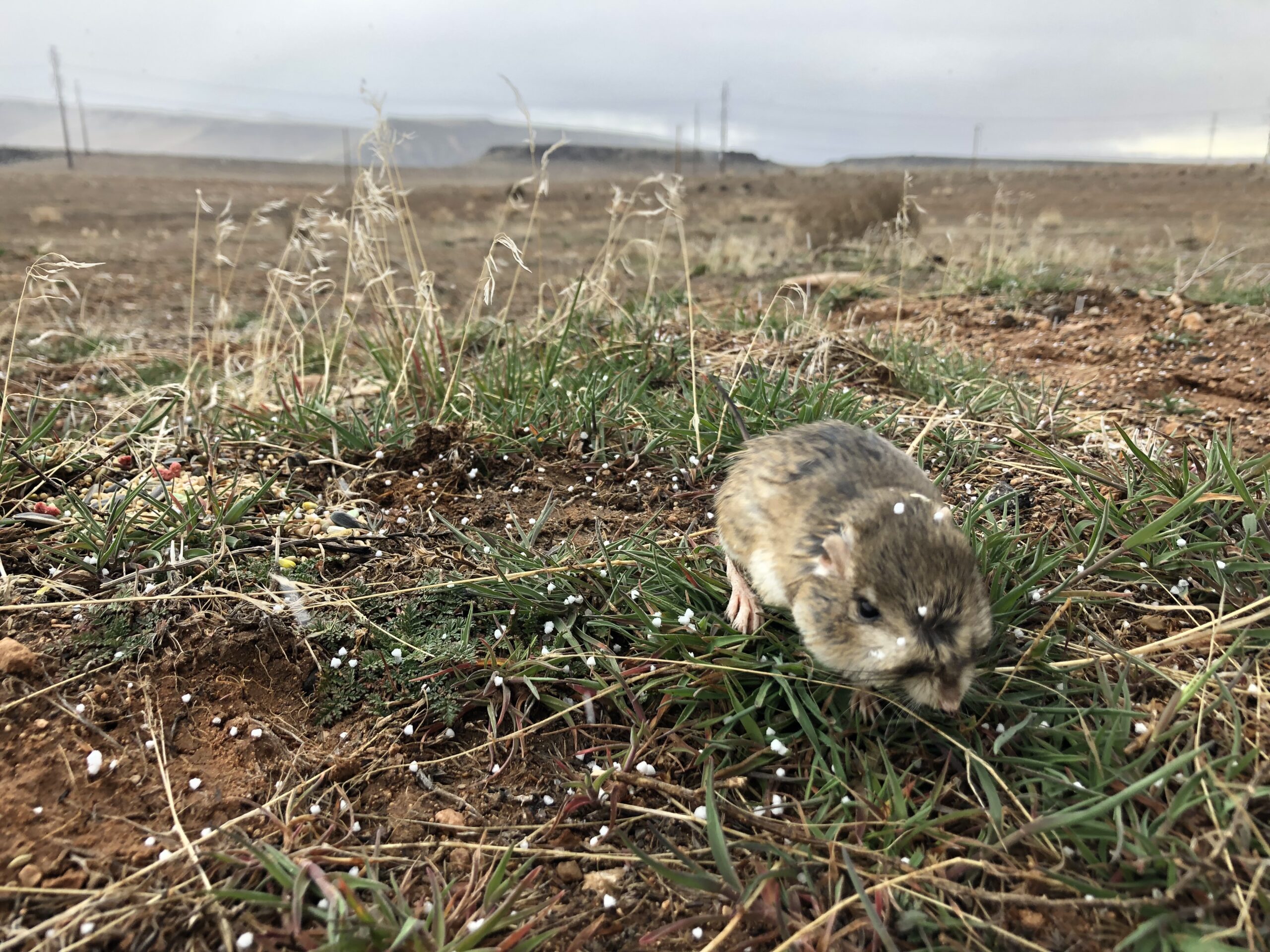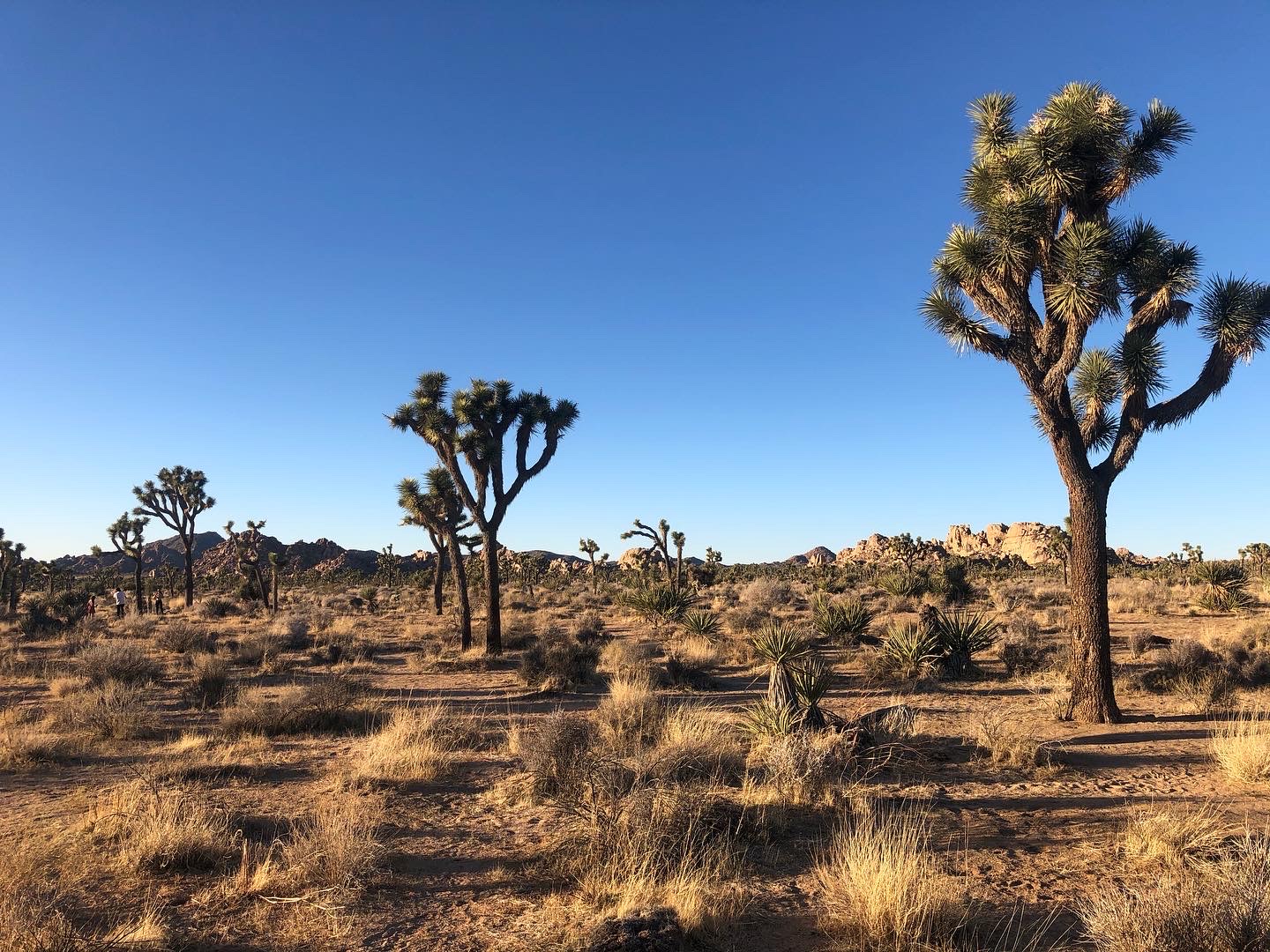Whew! What a busy couple of weeks.
Planting Joshua Trees has been quite the group effort and a lot of fun to work with people involved in different facets of the Joshua Tree Genome Project.
The week prior to planting involved meetings with the team, including Chris Smith, Karolina Heyduk, Jeremy Yoder and his graduate student Kate, and of course our USGS mentors Todd Esque and Lesley DeFalco. Basing their experience off of last year, they were concerned that there weren’t as many plants with 3 or more blades because those have shown to be more likely to survive once planted in the gardens. With that in mind, it was harder to choose the number of gardens to plant these seedlings in based on the likelihood that there would be fewer to survive. After assessing how many seedlings we had at each blade stage and their health rating (1-3), we decided on planting at 3 of the 4 gardens planted last spring. One of the gardens was easy to rule out since none of the seedlings survived there due to poor soil for Joshua Trees.
With this information decided, Bridget and I got busy tagging seedlings and getting them into the database, so that we can track each individual plant through the experiment. Lesley was then able to dedicate each plant to a specific garden. The two USGS Biological Science Techs, Caitlin and Sharon, helped us move each crate of Joshua Trees out of the greenhouse, so they could “harden off,” or acclimate to the full spectrum of temperature fluxes that the greenhouse tempers. You wouldn’t think such small stature Joshua Trees could weigh that much, but factoring in the nearly foot-long plant bands full of soil that they were contained in and then having 25 of those packed in each crate, they actually weigh quite a bit! In teams of two, we lifted and shifted the crates using a dolly and wagon, making sure to keep the order of crates the same out in the shade house as they were in the greenhouse. Our final step was to flag each plant for the garden they had been designated to – Pink for Cactus Mine (Local Nevada Garden), Yellow for Ridgecrest (Ridgecrest, California Garden), and White for Turkey Farm (St. George, Utah Garden).
We were ready to go for an early start on Monday morning!
Day 1: Monday – 7am – USGS Greenhouse – Boulder City, NV
Yawning and not mentally ready for the day, Bridget and I roll up on this lightly breezy morning (as they usually are in the desert) with many layers, hats, 2 water bottles a piece and a hearty lunch. We hook up the 500 lb water trailer to the back of our truck and drag the hoses to start filling it up while we wait for the U-Haul truck to arrive to load up the plants. The back of our truck is stuffed with buckets of gloves, watering cans, shovels, extra flags and foam pads to kneel on as we plant (the soil starts to feel harder and harder as the day goes on). All the crates with at least one pink flag are loaded –we create an assembly line of people lifting and carrying crates over to one person arranging them into the back of the truck. Then we all load up into our vehicles and we’re off to Cactus Mine!

We pull our truck up to the side of the garden to be in position for when we’re ready to water. We start by rolling out transect tapes to mark out as straight of lines as possible –Bridget and I know the straighter the lines, the easier it is to find plants once many have died because it makes the rows of plants less clear. Meanwhile, the auger is giving us trouble when we’re trying to start it for digging holes, so everybody grabs a shovel and we start digging by hand – a much slower process. They finally get the auger going, and we pop in our turquoise ear plugs and follow in their path as crates are opened up and plants are laid out into the holes for the planters to then take over the final step. After a long day, we’re treated by a beautiful sunset that seems to fully surround the sky around us and the mountains around our fading desert valley. We drive out with a near-full moon rising, most of the plants in the ground, and some peace of mind that we’ve got a much smaller bout to finish in the morning.

Day 2 – 7 am – Same location as last entry!
We roll up in the same fatigued mental state as the previous day, but with slightly declined physical states this time, including sore arms, tired backs and achy knees (don’t worry, we’re young, so we’ll bounce back!) Luckily, we finish up the planting around lunchtime; only leaving consolidating plants into fewer crates for the remaining gardens and picking up stray tags and flags and any other remains from our planting effort. Bridget and I hook up the fire hose to the water tank and spray the plants as gently as possible to avoid blowing them out. After that, we’re ready to head out with a little more time to recuperate and pack for our camp-out in Ridgecrest the next day.
Day 3 – 6 am – you get it by now
You can only imagine the toll on our mental and physical states by Day 3 with the hour earlier start tacked on…at least we have a four-hour drive to mentally prepare!!
I’m exaggerating for dramatic effect, but I’ll admit we were tired!
With the process down pat from two days of practice and a head start on drilling from Lesley, Todd and Karolina staying overnight to start that before the rest of our crew arrived that morning, Ridgecrest went so smoothly that we finished planting in one day!!

We patted ourselves on the back for that one. It shifted our plans for the following day, so that Bridget and I would join Lesley and Karolina camping out at Utah the following night to get another head start before the planters would arrive there, too.

Day 4 – 7 am – Ridgecrest Common Garden – Ridgecrest, CA (switching it up right when you get the hang of it)
Lots of driving today. The end!
Just kidding. After recording the positions of the new Joshua Trees in the garden and watering them one last time, we headed back to Boulder City. We loaded up the U-Haul one last time with the only remaining crates marked with white flags. It was a bittersweet moment..kidding again!!
We re-organized the cab of our truck that was in disarray after a few days of throwing equipment and various clothes/food randomly across the back seats. And with that we set off for St. George, another 3-hour drive to end the day. Which, Bridget and I decided, deserved a peanut butter chocolate milkshake -even though it was only about 50 degrees out 😊
We set up traps at the garden, then went right to bed, the gentle hoo-ing of owls lulling us off to sleep.
Day 5 – 7am – Turkey Farm Common Garden – St. George, Utah
LAST DAY! Woohoo!
After checking traps first thing to make sure any caught rodents wouldn’t get too cold (none were caught today though), we got to work clearing an area for our new Joshua tree garden. Today, Bridget and I decided to volunteer to take over digging holes with the auger. We’d regret that one later! Mostly kidding…
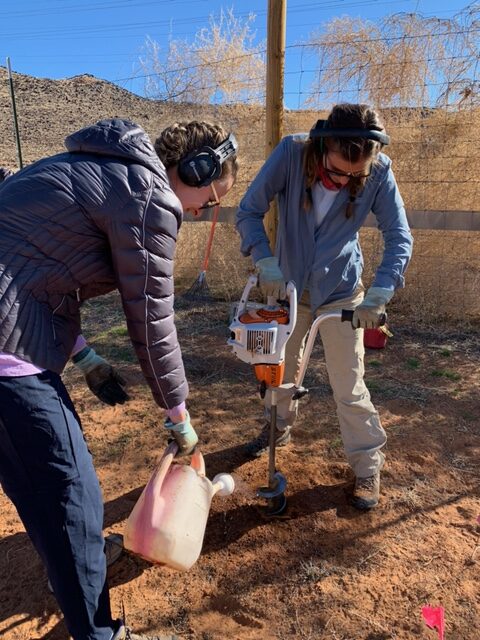
The Utah garden has very sandy soil, but after getting a few inches down, it is very hard to dig past as the soil layer becomes harder. After my first go at it, where I only got a few holes to the necessary depth, Bridget found that by rotating the auger around and around for a few minutes could finally get the hole dug through that hard layer. We finished digging after a few hours, with shaky hands and tired wrists and forearms from holding the vibrating handles steady. The rest of the crew arrived and handled planting, while others got started on clearing Salsola away from the garden fence. Once planting was finished and lunch was had, we all jumped in on the Salsola removal, taking another few hours, but ending with the garden in great shape for Bridget and me!
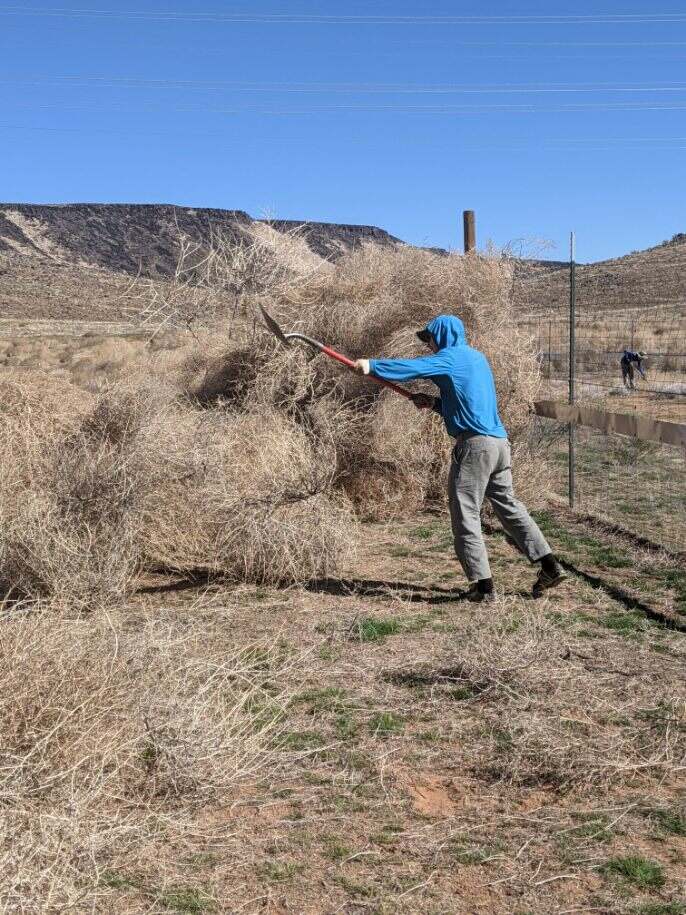
Lesley and Todd graciously treated us to smoothies on our way out. This was especially nice when we hit standstill traffic that added an hour to our trip back home due to lovely construction and people heading to Vegas for the weekend! Just what the doctor ordered!
All and all, though, it really was a satisfying week of good ol’ fashioned manual labor and teamwork to get a big project done! Working side by side in the soil and getting to talk about life and our backgrounds that led us to the environmental science field was a lot of fun too, and I’m glad we go the chance to work together on such an important project that we all care so much about!


